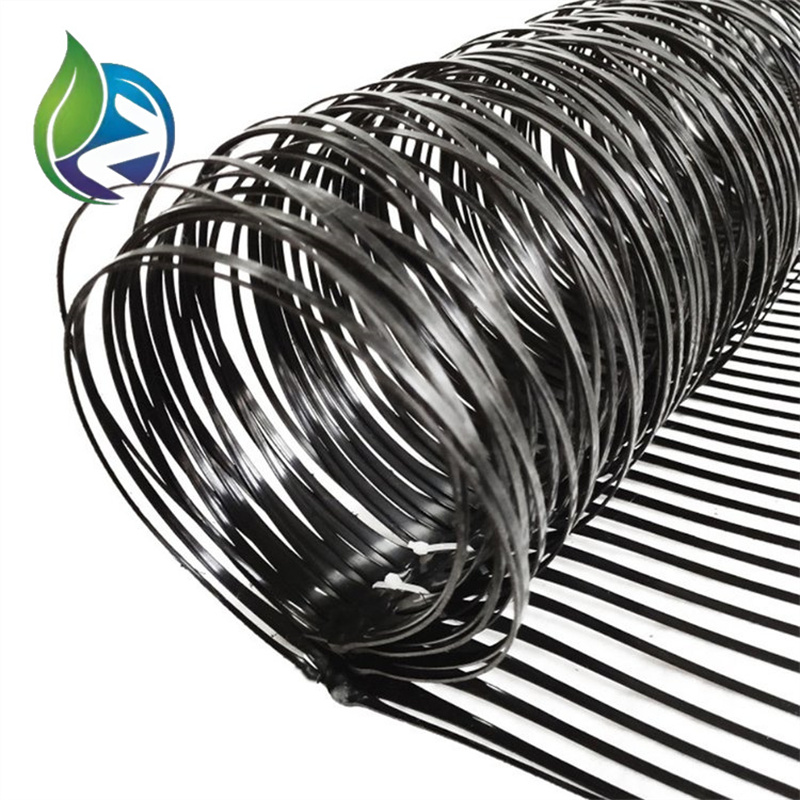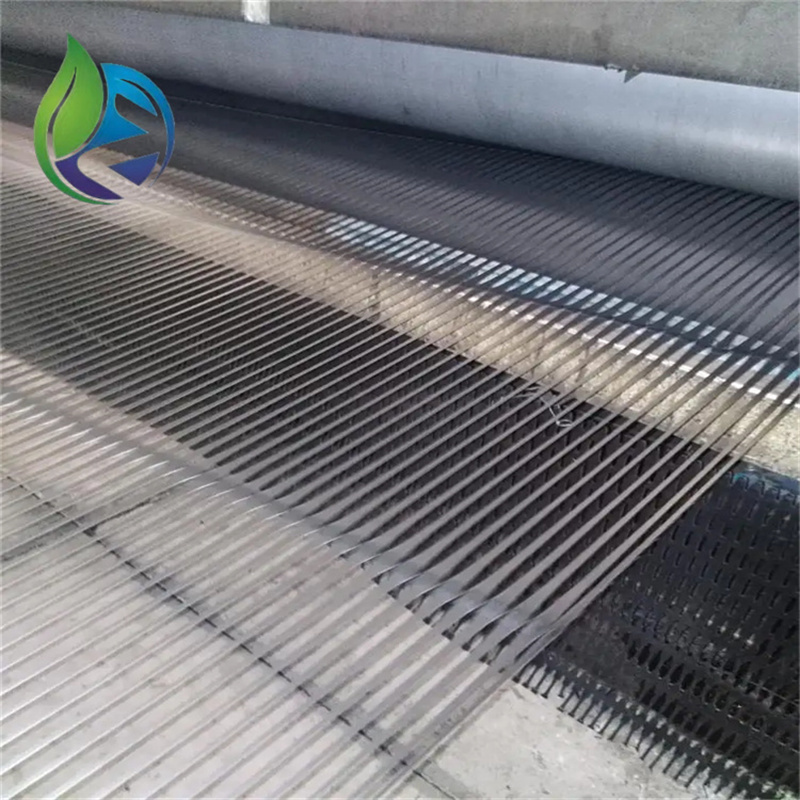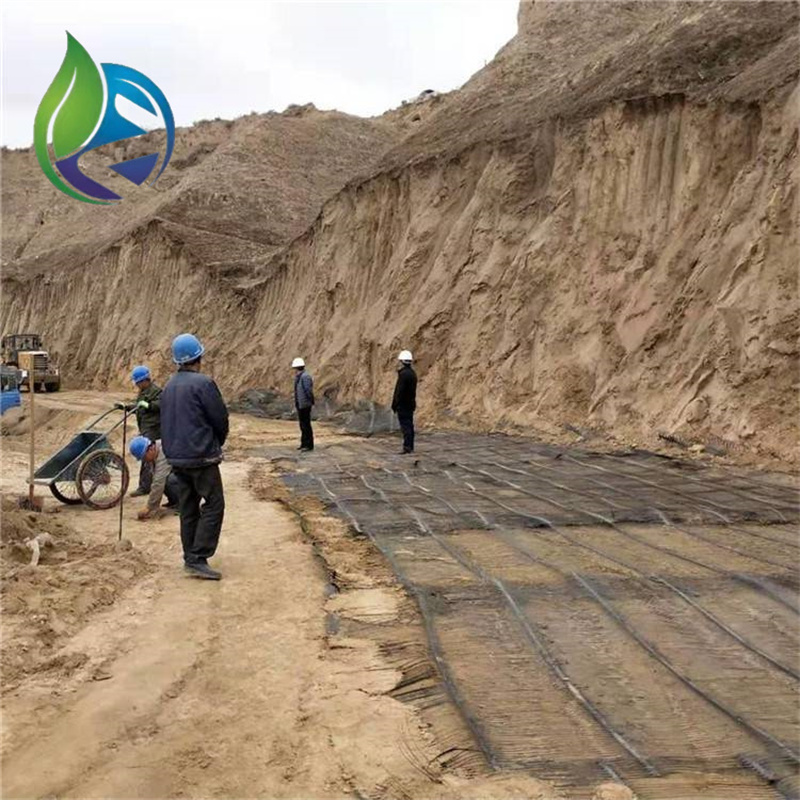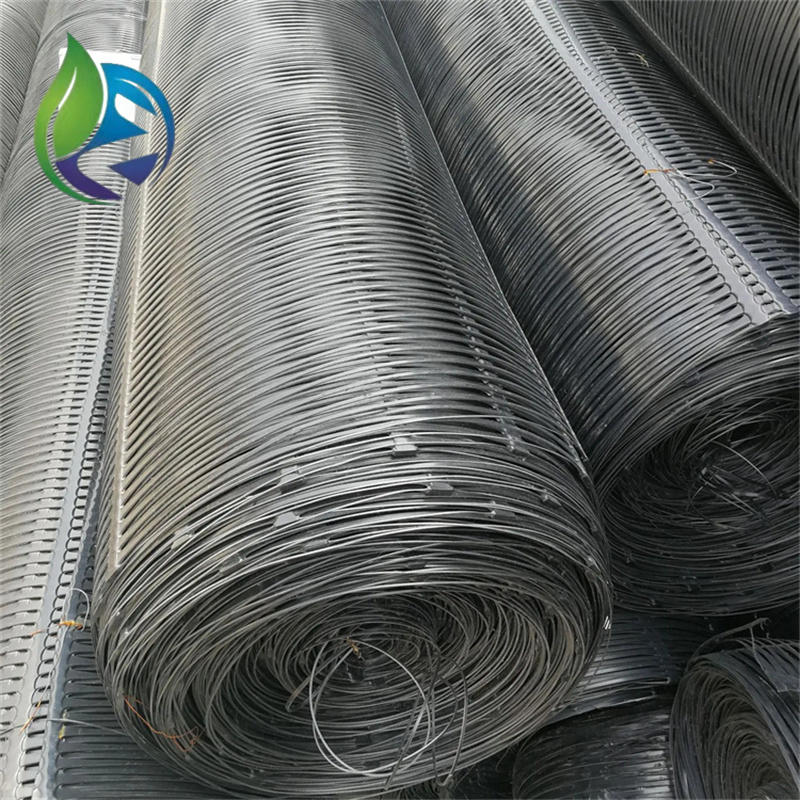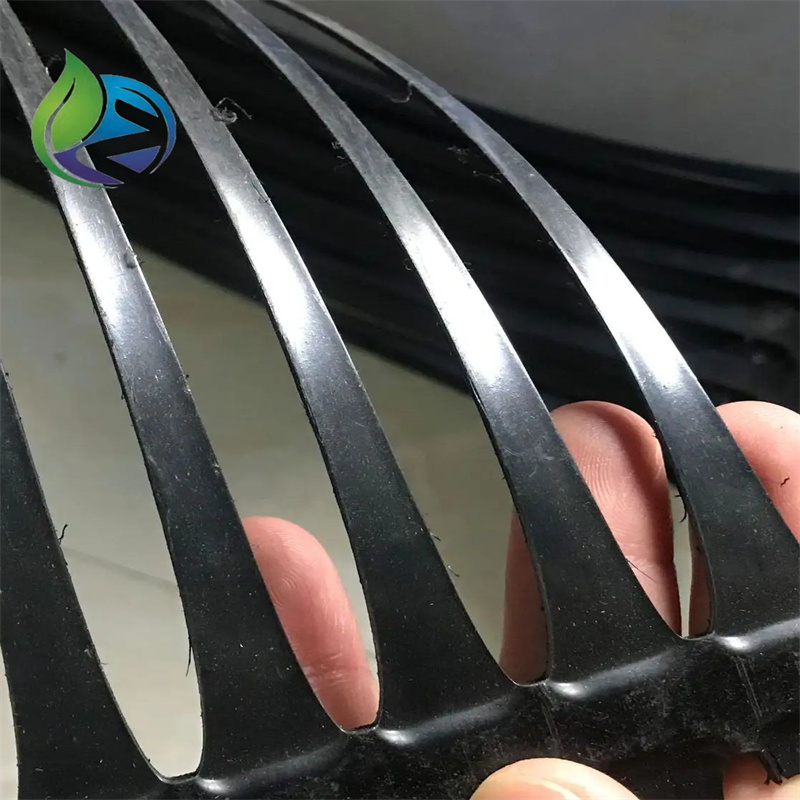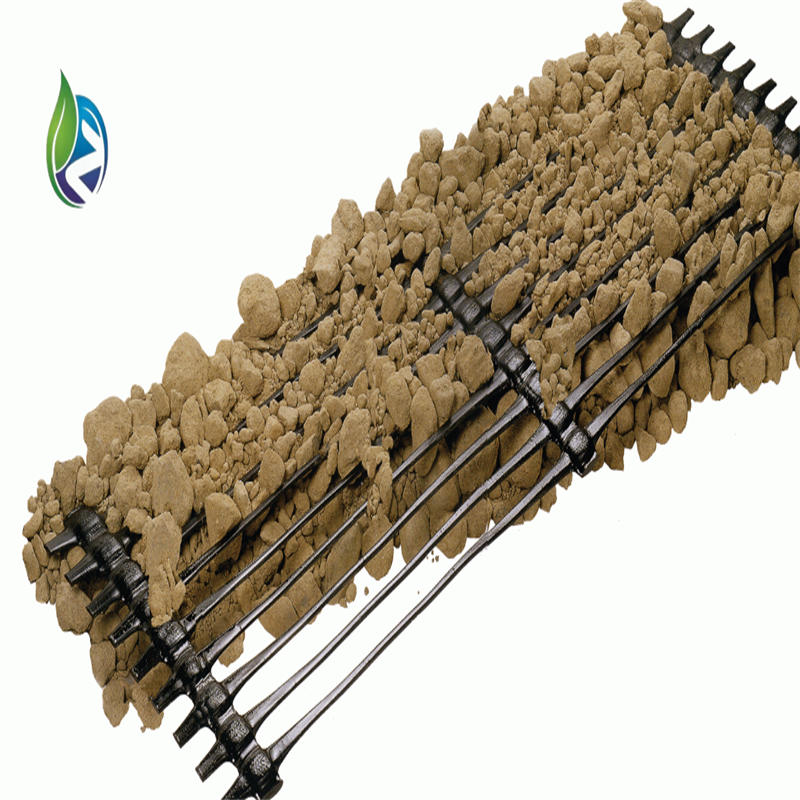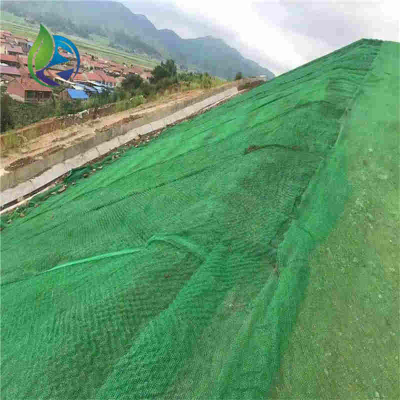Tensar Uniaxial Geogrid
Plastic uniaxial geogrid, a two-dimensional or three-dimensional grid-like structure crafted from high-performance polymers like polypropylene and polyvinyl chloride through thermoplastic or molding processes, is a versatile material for soil reinforcement and erosion control. This geogrid, renowned for its robustness and durability, significantly enhances soil stability by virtue of its high tensile strength, low elongation, and excellent interlocking capabilities with soil particles. The unique grid pattern not only restricts lateral soil movement but also promotes stress diffusion, thereby augmenting the bearing capacity of the soil foundation. Its resistance to creep deformation ensures long-term performance, while its chemical and physical stability ensures resilience against environmental factors. The installation process is straightforward, requiring minimal specialized equipment, making it an ideal solution for a wide array of soil reinforcement and erosion control applications.
Soil Reinforcement and Erosion Control using Uniaxial Geogrid
Soil reinforcement and erosion control using uniaxial geogrid is a proven geotechnical solution for stabilizing steep slopes, retaining walls, embankments, and other structures subjected to lateral earth pressure. With its high tensile strength in one principal direction, soil reinforcement and erosion control using uniaxial geogrid ensures long-term structural integrity and slope protection in both natural and engineered environments.
What Is Uniaxial Geogrid?
Uniaxial geogrid is a polymer-based, high-strength geosynthetic material specifically designed for soil reinforcement and erosion control using uniaxial geogrid applications. Unlike biaxial geogrids, which offer strength in both directions, uniaxial geogrid exhibits exceptionally high tensile strength in a single orientation, making it ideal for retaining soil and controlling surface movement on steep inclines.
Benefits of Soil Reinforcement and Erosion Control using Uniaxial Geogrid
High Tensile Strength
The geogrid’s uniaxial orientation delivers superior resistance to soil movement and sliding forces, making soil reinforcement and erosion control using uniaxial geogrid effective in demanding slope and wall projects.Soil-Structure Interaction
Strong interlock with granular soil enhances load transfer and distributes stress, supporting the effectiveness of soil reinforcement and erosion control using uniaxial geogrid in both horizontal and vertical reinforcement.UV and Chemical Resistance
Designed to withstand environmental exposure, soil reinforcement and erosion control using uniaxial geogrid remains stable against ultraviolet rays, acids, alkalis, and microbial activity.Reduced Earth Pressure
By reinforcing backfill and controlling displacement, soil reinforcement and erosion control using uniaxial geogrid significantly reduces the earth pressure acting on retaining structures.Improved Safety and Durability
With its robust engineering performance, soil reinforcement and erosion control using uniaxial geogrid contributes to safer, longer-lasting infrastructure in roadways, railways, dams, and green embankments.
Applications of Soil Reinforcement and Erosion Control using Uniaxial Geogrid
Soil reinforcement and erosion control using uniaxial geogrid is widely used in:
Reinforced retaining walls (gravity walls, segmental block walls)
Steep slope stabilization
Highway and railway embankment reinforcement
Riverbanks and coastal erosion protection
Bridge abutment support
Landfill cap systems
In each of these scenarios, soil reinforcement and erosion control using uniaxial geogrid improves load-bearing capacity and reduces long-term maintenance.
Installation of Uniaxial Geogrid
Proper deployment of soil reinforcement and erosion control using uniaxial geogrid is essential for optimal performance:
Prepare the foundation by grading and compacting the base layer.
Lay the uniaxial geogrid with the strength direction aligned with the direction of force (typically perpendicular to the wall face or slope).
Backfill in layers, compacting each layer to design specifications.
Ensure proper overlap between adjacent geogrid sheets to maintain continuity.
Anchor the geogrid into the retained zone or embed it into the facing system.
Why Choose Soil Reinforcement and Erosion Control using Uniaxial Geogrid?
Choosing soil reinforcement and erosion control using uniaxial geogrid offers:
Cost-effective stabilization of challenging terrains
Enhanced design flexibility for both natural and constructed slopes
Environmentally friendly solutions that integrate with vegetation
Proven performance in diverse geotechnical applications
Faster construction with reduced excavation volumes
By relying on soil reinforcement and erosion control using uniaxial geogrid, engineers and contractors can design smarter, safer, and more sustainable infrastructure systems.
Conclusion
Soil reinforcement and erosion control using uniaxial geogrid provides a technically advanced, efficient solution for geotechnical challenges involving slope stability and earth retention. With high tensile strength, excellent soil interaction, and resistance to environmental degradation, soil reinforcement and erosion control using uniaxial geogrid ensures that your infrastructure remains strong, safe, and durable for decades to come.


